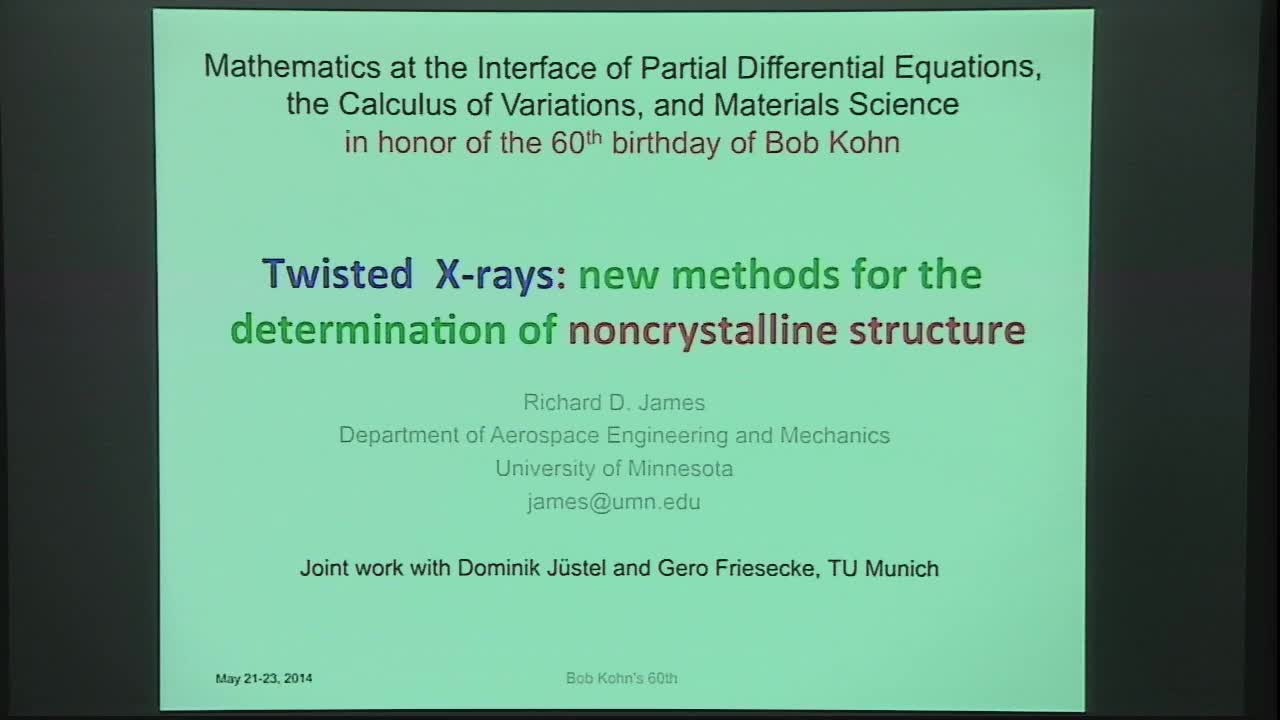Twisted X-rays: New Methods for the Determination of Noncrystalline Atomic Structure
Presenter
May 23, 2014
Keywords:
- Determination
MSC:
- 74Qxx
Abstract
A central problem of materials science is to determine atomic structure from macroscopic measurements. Von Laue developed a theoretical method that was put into practice and popularized by Bragg, based on the scattering of plane waves by a crystal lattice. Recently, new structures have emerged like buckyballs (Nobel Prize, Chemistry, 1996) and graphene (Nobel Prize, Physics, 2010), and the third fascinating form of carbon, the carbon nanotube (no Nobel prize yet). These have a regular structure but are not crystalline. Regular but noncrystalline structures are also quite common in biology: examples of medical interest include many parts of viruses, and amyloid protein fibrils that cause diseases like Alzheimer's, Parkinson's and Creutzfeldt-Jakob disease. Structures like buckyballs, graphene and carbon nanotubes were not discovered — they are believed to have been present on earth since nearly its beginning — but the recent interest lies in the fact that they were isolated and studied, and exhibited interesting properties. There may well be related, maybe equally interesting but perhaps less common, structures around us. Thus, the determination of the atomic structure of noncrystalline structures by macroscopic methods is a central problem. After clearing up some fallacies about ordinary x-ray crystallography (Bragg’s incorrect picture, the intensity of scattered radiation is not the squared norm of the Fourier transform of the lattice), we propose a new method, which involves exploiting the relationship between structure and the invariance group of Maxwell’s equations. We work out the details for helical structures like carbon nanotubes and amyloid protein fibrils. This is joint work with Dominik Juestel and Gero Friesecke, TU Munich.
